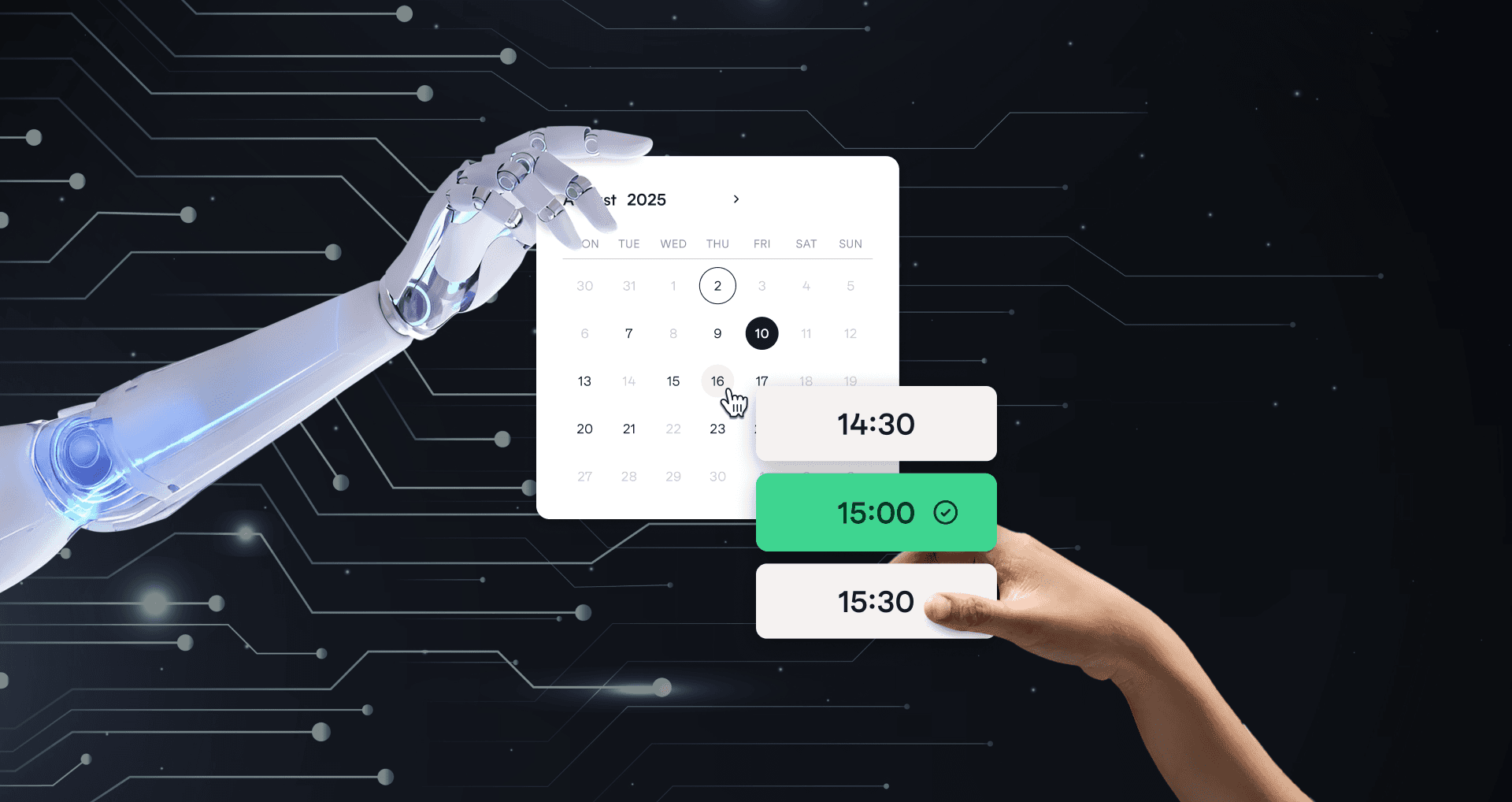I walked onto the stage knowing that AI in hiring is a hot topic. 25% of all the talks that day had AI in the title, but this was different. I don’t want to encourage the TA community to implement AI because it’s a buzzword; I wanted to break down exactly how AI and automation can be used to provide a greater return on your time, and allow you to do the things that provide the most value to your recruitment processes.
My presentation was structured around our upcoming annual Candidate Expectations report. We surveyed 7,000 candidates around the world to get their honest opinions on the state of recruiting right now, and how they’re using and thinking about AI. The results were fascinating, so I’ve picked out a few highlights for those who couldn’t make it.
Balancing AI and Automation with the Human in Hiring
One on hand, hiring teams are under more pressure than ever. Application volumes are higher, processes are longer, and candidates expect to move quickly through the process. Despite this, over half of candidates still told us that the human touch is vital in the hiring process. When it’s missing, they notice.

The cost of losing the human touch
When candidates have a bad experience, we know they don’t keep it to themselves. Candidates told us that they simply wouldn’t recommend your business after a frustrating interview booking experience — and some will actively warn colleagues, peers and friends in your industry.
Scheduling is a particular danger zone. 41% of candidates have left a recruitment process entirely because it took too long to schedule. Yet, this is something you have complete control over.

That’s before we even get to the interviews themselves. With each additional round, inefficiencies compound, and so does candidate frustration. By the time you get to the offer stage, you may have already lost some of your best candidates simply because your process felt slow and impersonal.
Why automation alone isn’t the answer
It’s tempting to think: “If speed is the issue, let’s automate everything.” But over-automation can strip away the empathy, connection and trust that candidates need in order to say “yes” above all other offers. I know the market is tough, but competition is still rife for the very best candidates.
The truth is, automation isn’t about replacing recruiters — it’s about freeing them up. When done right, it removes the repetitive, low-value admin so that your team can focus on the high-value touch points that matter most.
Three ways to keep the human in automated hiring
1. Automate admin, not empathy
Start by identifying the tasks that slow your team down but don’t require emotional intelligence, like scheduling, reminders, or message templates. These can be fully or partially automated without losing any personal connection.
This immediate time saved can be reinvested into activities that do require human judgment and empathy: giving personalised feedback, having meaningful conversations, and proactively updating candidates. These are the things that candidates will remember.
2. Upskill your team
Automation is only as good as what you do with the time it saves. The time I’ve saved through automated interview scheduling has allowed me to provide 1:1 and group coaching to our Hiring Managers on interviewing. It’s also allowed me to provide personalised feedback to every single candidate that interviews with us. The upshot is we’re not only hiring quicker, but we’re making higher quality assessments and even better hires.
In other words: if you’re going to remove some of the mechanical work from your day, make sure you’re equipping yourself, and your team, to do exceptional things.
3. Personalise at scale
Automation doesn’t have to be generic. Tools can now pull information directly from your ATS to automatically populate emails, calendar invites and messages with each candidate’s name and job titles (for example). I’m a huge fan of tools that plug directly into ATS tools; your ATS is your source of truth, and it becomes easier to adopt or up skill on something that is easier to access.
This means you can send 50 invitations in minutes, and still make each one feel like it was written for that person. The candidate gets a seamless experience and your recruiters keep their focus where it belongs. I explain how this works in a short clip from my presentation below:
What this looks like in practice
At Cronofy, we’ve seen first-hand how balancing automation and human touch transforms hiring.
Wise are a wonderful example, and I spoke about them in my presentation. Before implementing automated scheduling, it took them an average of six days to book in an interview. By using Cronofy within SmartRecruiters, they have been able to reduce their time-to-schedule from six days to 90 minutes.
Not only were they moving quality candidates through the process faster — reducing the risk of dropouts — but they also started receiving unprompted positive feedback from candidates about how easy and smooth the scheduling experience was. That’s a huge boost to your employee brand and free marketing!
This is what happens when automation is used thoughtfully: the process becomes faster and more personal.
A framework for getting started
Wondering where to start? I can’t give you the answers, but these steps might be a good foundation:
1. Audit your process
Map out each step from application to offer. Identify the slowest points and the most repetitive or time-consuming tasks. These should be your focal points and quick wins.
2. Automate the bottlenecks
Choose tools that integrate with your ATS to handle scheduling, reminders, and standardised communication.
3. Reinvest the time
Use the hours you save to deepen relationships with candidates and hiring managers, ensuring every interaction adds more value than time spent on the administrative tasks.
The balance is the point
My presentation at RecFest wasn’t really about AI or automation. It was about balance. The goal isn’t to become a fully automated hiring machine — it’s to use technology to remove friction so your team can focus on the parts of hiring that technology can’t replace.
Ultimately, no matter how advanced AI becomes, candidates don’t remember the tool that scheduled their interview, or the product that transcribed their conversation. They remember the person who made them feel seen, valued and excited to join your company. This is your USP that no other organisation can replicate, and this is your opportunity to lean into it and stand out.
If you can automate for speed while doubling down on human connection, you don’t just hire faster — you hire better.
Final reflections
I think I was surprised by the number of people who are finding challenges in providing a human touch to a process, and wanting to understand how AI and automation can solve this problem. It feels like an oxymoron; using technology to provide more of a human touch. That’s why I’m encouraging you to think deeply about the type of experience you want your candidates to have, the type of process you want to create, and ultimately what tool or product is going to help you achieve that.




